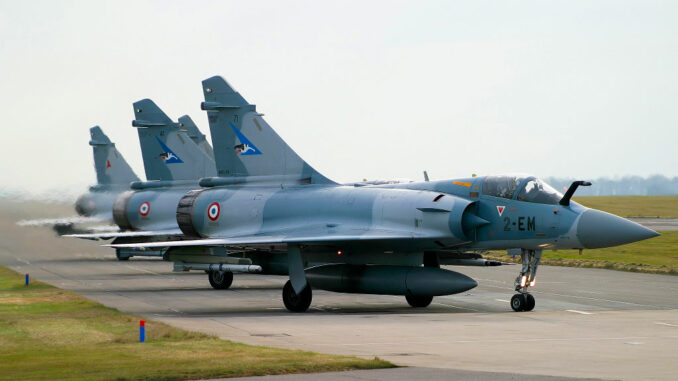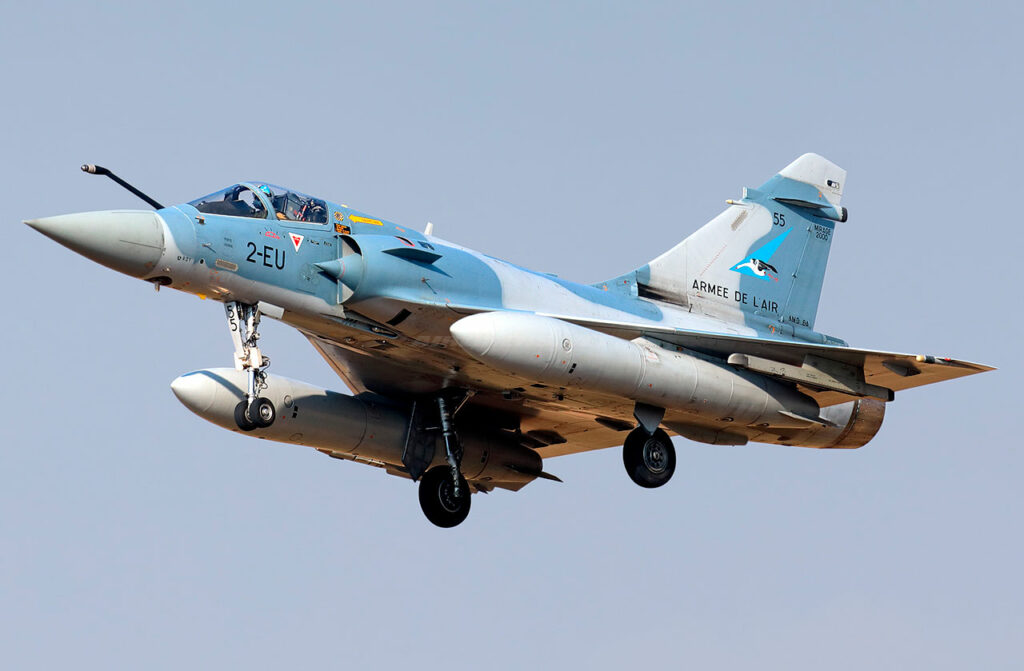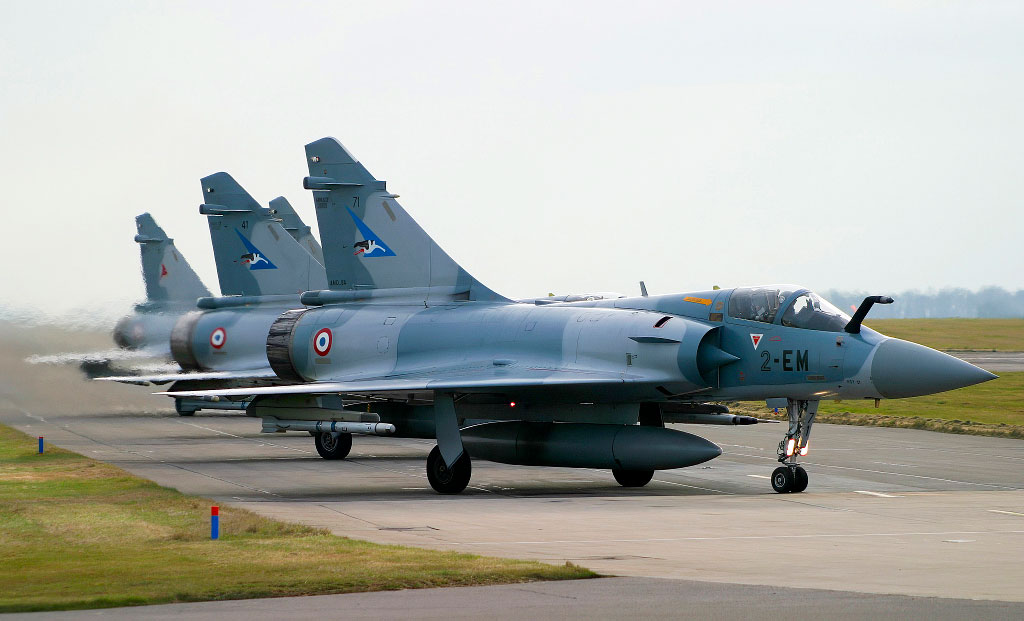
France will deliver six Mirage 2000-5F to Ukraine by 2025. The aircraft, modified for air-to-ground operations, mark a milestone in military support.
A turning point in French military support
In January 2023, the debate focused on sending Leopard 2 and Abrams tanks to Ukraine. At the time, France ruled out the transfer of its Leclerc tanks. The French Minister of the Armed Forces, Sébastien Lecornu, justified this decision by three essential criteria: defensive logic, preservation of French capabilities, and operational maintenance of equipment. In the case of the Leclercs, their complex maintenance represented a strategic challenge.
However, the French approach has evolved. In June 2023, President Macron announced the dispatch of Mirage 2000-5Fs, marking a turning point in national defense policy. These aircraft, initially intended to remain in service until 2029, had played a central role in French air defense, notably with the 1/2 Cigognes and 3/11 Corse squadrons. These units had accumulated, for example, 600 flying hours to secure the Red Sea.

Mirage 2000-5F technical specifications
The Mirage 2000-5F is a versatile aircraft designed for air defense missions. With a maximum speed of Mach 2.2 (2,336 km/h) and a range of 1,500 km, it offers performance levels tailored to Ukrainian needs. France plans to modify these aircraft to integrate air-to-ground capabilities and reinforce their electronic warfare system. These adjustments include :
- Compatibility with modern air-to-ground munitions, such as the Scalp missile.
- Enhanced radar systems for long-range detection.
- Upgrades to electronic warfare systems, increasing their survivability.
These modifications require specific training for Ukrainian crews. Pilots and technicians should be operational by mid-2025.
Logistical challenges and impacts for France
Delivering these aircraft means guaranteeing their maintenance in operational condition (MCO). This requires a dedicated logistics chain, particularly for spare parts and technical training. France has undertaken to provide a “complete support model” to limit operational interruptions for Ukraine.
Internally, this transfer affects French air capacity. On December 31, 2023, the French Air Force (AAE) still had 28 Mirage 2000-5Fs in service. Their early withdrawal will increase pressure on the Rafale and refurbished Mirage 2000Ds, increasing maintenance costs and reducing their availability.
Anticipation and capacity building
To compensate for this temporary reduction in its fleet, France is counting on accelerated deliveries of F4-standard Rafales. These modern aircraft offer enhanced capabilities:
- Enhanced connectivity, essential for coalition operations.
- Increased payload, enabling more ammunition to be carried.
- Advanced defense systems, adapted to today’s threats.
A Rafale takes around three years to produce. Therefore, deliveries must be anticipated as early as 2025 to meet the targets set by the 2024-2030 Military Programming Law (LPM). The latter provides for a total of 185 combat aircraft, comprising 137 Rafales and 48 upgraded Mirage 2000Ds. However, recent unforeseen events (loss of two Rafale Bs and disposals to Ukraine) could see this fleet fall below the 185-unit threshold, with repercussions on operational capabilities.

Implications for Ukraine
The six Mirage 2000-5Fs will complete the Ukrainian fleet, which will also include F-16s supplied by other partners. These aircraft will reinforce Ukraine’s air superiority, particularly in targeted strike and air defense missions. However, their limited number could limit their overall strategic impact.
The main challenge lies in logistical coordination between different types of aircraft (F-16 and Mirage). This involves :
- Separate supply chains.
- Training adapted to each system.
- Complex ground infrastructure management.
Despite these challenges, the Mirage 2000-5F makes an immediate contribution, particularly to rapid interception missions, thanks to its speed and maneuverability.
Prospects for European defense
The French decision is part of a wider dynamic of European military support for Ukraine. It reflects an adaptation to the specific needs of the conflict, while highlighting the challenges of coordination between EU member states.
The lessons learned from this experience could influence future European defense cooperation. For example, the pooling of maintenance and training capabilities between European partners could reduce costs and improve operational efficiency.
The transfer of six Mirage 2000-5Fs by France marks a significant step forward in military support for Ukraine. Although limited in number, this transfer symbolizes the adaptability of French forces to strategic developments. However, it also raises major logistical and operational challenges for both France and Ukraine. Anticipation of Rafale deliveries and enhanced cooperation between European allies will be essential to meet the challenges ahead.
War Wings Daily is an independant magazine.